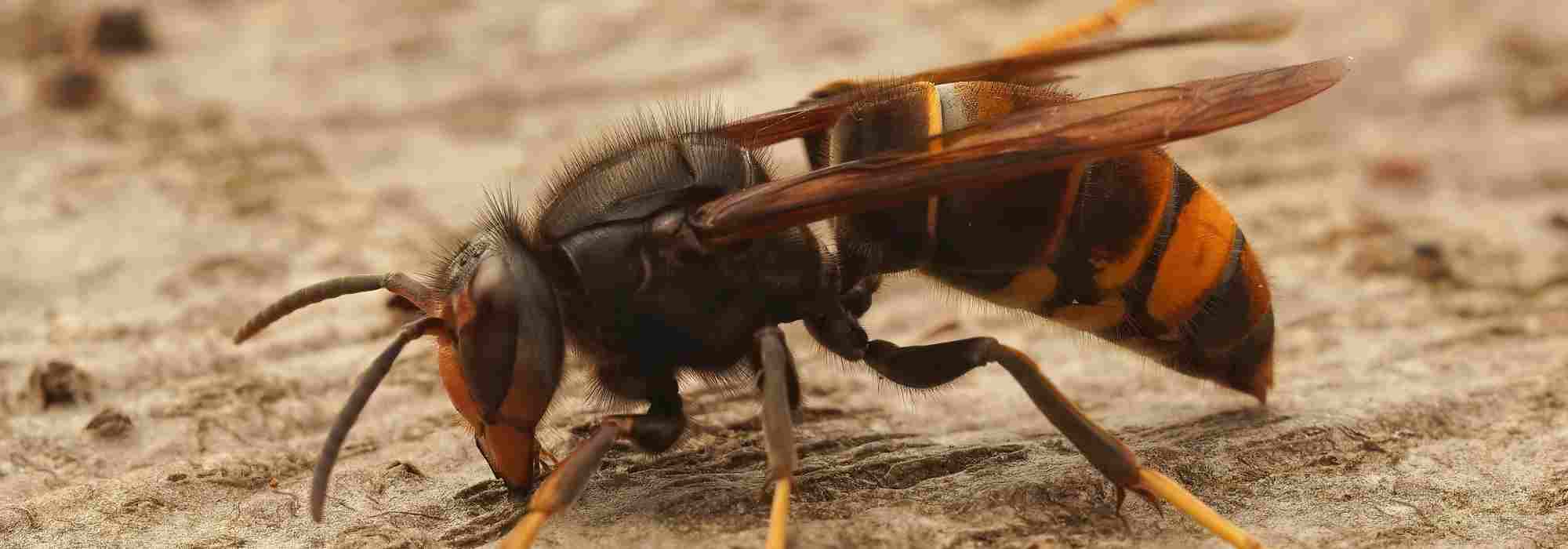
Asian Hornet and European Hornet: How to Tell Them Apart?
All you need to know about these two species of hornets that cause much fear
Contents
In November 2005, in Lot-et-Garonne, the presence of the Asian hornet on French territory was officially confirmed. Today, its presence is established across almost the entire country, with the Massif Central and the north-east being less affected. Its impact is therefore increasing in our landscapes, including in our gardens, where it is no longer rare to see it, but also and especially on beehives. For the Asian hornet is a proven predator of domestic bees. This Asian hornet, feared by the public, is often confused with its cousin, the European hornet. The two species however show notable differences in their morphology, their behaviour and their impact on the garden environment. Did you know that the European hornet is a native species with an ecological role that is generally little known?
Let’s learn to properly distinguish the Asian hornet from the European hornet to better protect our gardens, but also to act with discernment.
A major difference between Asian and European hornets: their morphology
How to reliably identify the European hornet (Vespa crabo) and the Asian hornet (Vespa velutina nigrithorax), two large social wasps from the Vespidae family? Provided you’re close enough…
Slightly different size and morphology
The European hornet and the Asian hornet are both hymenopteran insects, classified as social wasps. The European hornet is the largest representative of social wasps in Europe. The queen can reach up to 3.5 centimetres in length, while the workers measure between 2 and 3 centimetres. It has a stocky silhouette, with a bulging abdomen and a notable wingspan. Its flight is powerful, often noisy, making it easily spotted in gardens.
The Asian hornet is slightly smaller, with an average size of 2.5 to 3 centimetres for the workers. Its silhouette is slimmer and more elongated, its head narrower and its abdomen less broad. Its flight is more fluid, faster and generally quieter than that of the European hornet, making it harder to detect.
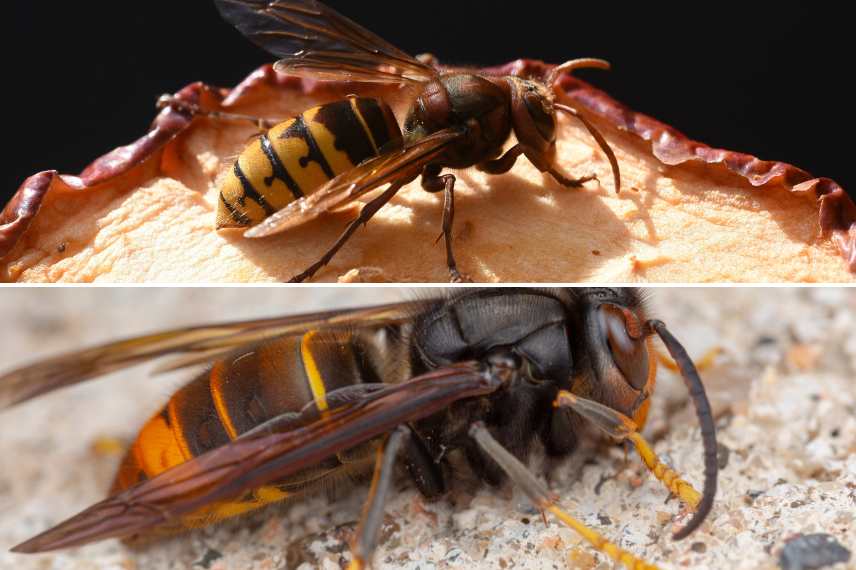
Top: the European hornet with its yellow and black abdomen. Bottom: the Asian hornet, with yellow legs and a darker body
Their colouration, a key distinguishing feature
Colouration is the most reliable feature for distinguishing the two species in the field. The European hornet has a body marked with reddish-brown, black and yellow, with its abdomen striped in yellow and black. Its face is also yellow.
In contrast, the Asian hornet stands out with a much darker appearance, the adults being almost velvety dark brown, with brown abdominal segments edged by a thin yellow band and a fourth segment in yellow-orange. As for the legs, they are brown with yellow tips. Its head is also black, with a yellow-orange face. This latter detail gives it its name of yellow-legged hornet.
This distinction by leg colour is visible at a reasonable distance when an Asian hornet is perched or hovering.
Asian and European hornets, two species with different natural histories
These two hornets belonging to the same genus differ in their natural history and behaviour.
Origin and natural distribution
The European hornet is a species naturally present in France. It is frequently encountered in the countryside, particularly in wooded areas, gardens and tree-lined parks. It coexists with other insects and humans. Its way of life is perfectly adapted to temperate environments and it contributes to the natural balance of our rural surroundings.
On the other hand, the Asian hornet with yellow legs is an invasive species originating from Southeast Asia, more precisely from northern India, China and the Indochinese peninsula. Accidentally introduced in pottery imported from Asia, most likely in 2004, it quickly adapted to the climatic conditions of our country. Today, it is present across almost the entire territory, due to its great adaptability to various environments, whether rural or urban.
Different behaviour and diet
The European hornet captures insects such as flies, wasps, grasshoppers, butterflies and caterpillars, or abandoned meaty matter rich in proteins to feed the brood. The adults are also phytophagous and consume plant juices from ripe fruit (they are particularly fond of grapes!), flower nectar and sap. These are therefore insects that play a role as pollinators. Similarly, they actively participate in the natural regulation of pest populations such as flies, caterpillars or certain wasps. The European hornet is therefore a fully-fledged beneficial insect.
On the other hand, the Asian hornet is polyphagous and hunts all sorts of insects. It also adopts the role of a targeted predator of domestic bees or social or solitary wasps in forest environments. Around 159 different prey species have been identified. The Asian hornet acts as a disruptor of the entomological balance and causes a decline in biodiversity. It also feeds on ripe fruit or nectar.
The impact of the Asian hornet on beehives is significant, violent and amplified by the environmental context. It hovers in front of hives and attacks worker bees, cutting them up to keep only the protein-rich thorax. It may even enter the hives.
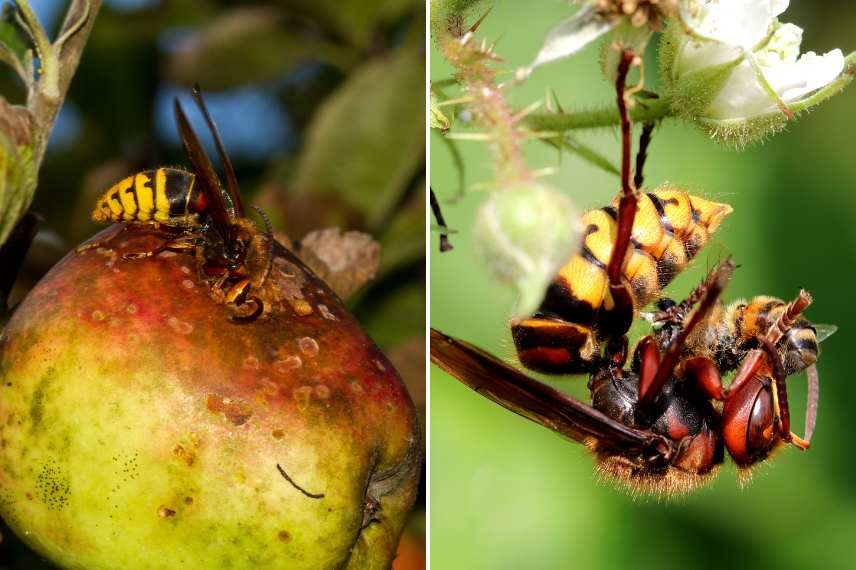
European hornets feed on insects and fruit
A fairly similar life cycle
Our two hornets have quite similar life cycles. In spring, around May, a founding queen, fertilised the previous autumn, just emerged from winter diapause, creates a new nest and lays a few eggs. It is she who will care for the first larvae and look after the nest. These first larvae become workers, sterile females, who take over the brood and the nest. At the end of summer, reproductive females and males are born, leave the nest and mate. Only the fertilised females survive and overwinter. The males and workers die and the nest is abandoned by the end of autumn. No individual will ever return to it.
The only difference between the Asian hornet and the European hornet lies in the nest. The founding queen of a new Asian hornet colony builds a first rudimentary nest, then a secondary nest where the colony will develop.
Nesting, a distinguishing feature between the two hornet species
The nest and the chosen nesting site are often decisive clues for distinguishing between Asian hornets and European hornets.
The hornet’s nest is made of papier-mâché, created by collecting plant fibres mixed with saliva. The European hornet establishes its nest in cavities such as hollow trees, stone walls, attics, shutters, bird boxes, or under building rafters. The nest is rather medium-sized and relatively concealed.

On the left, a European hornet nest under a roof; on the right, an Asian hornet nest in a tree
The yellow-legged hornet’s nest is more exposed to view, at least in autumn and winter. Its first spring nest is built in a low position, sometimes even at ground level. Later, the secondary nest is built higher up, constructed in the foliage of tall trees, making it invisible during the growing season. The Asian hornet’s nest is circular and measures 40 to 50 cm in diameter, often striated with beige and brown.
And what about their aggressiveness?
Naturally, hornets are not aggressive species towards humans. Their sting often results from unintentional provocation or a moment of carelessness. However, the nest guardians’ role is to protect the brood. This is why they may become aggressive if the nest is approached. It is therefore essential to maintain a distance of at least 5 metres from a nest and not to intrude within their surveillance perimeter.
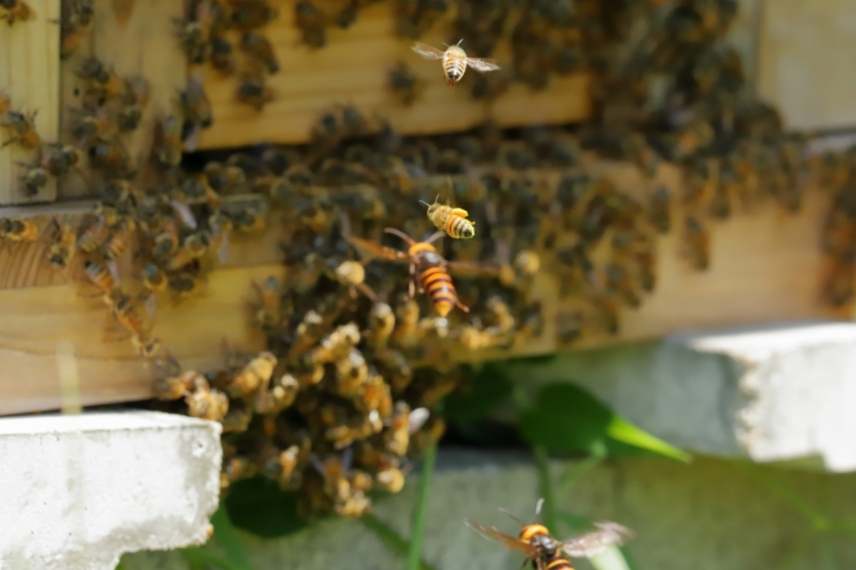
Asian hornets specifically target honeybee hives
A hornet sting is hardly more painful than a wasp sting. There is only real danger in cases of allergy to hornet venom or multiple stings (several hundred). But if you don’t disturb hornets near their nest, there’s no chance of them swarming you in squadron formation! This is why you should never interfere with a nest, but rather call a professional to remove it. It is also recommended to report any Asian hornet nests to the authorities (local council, National Inventory of Natural Heritage).
- Subscribe!
- Contents
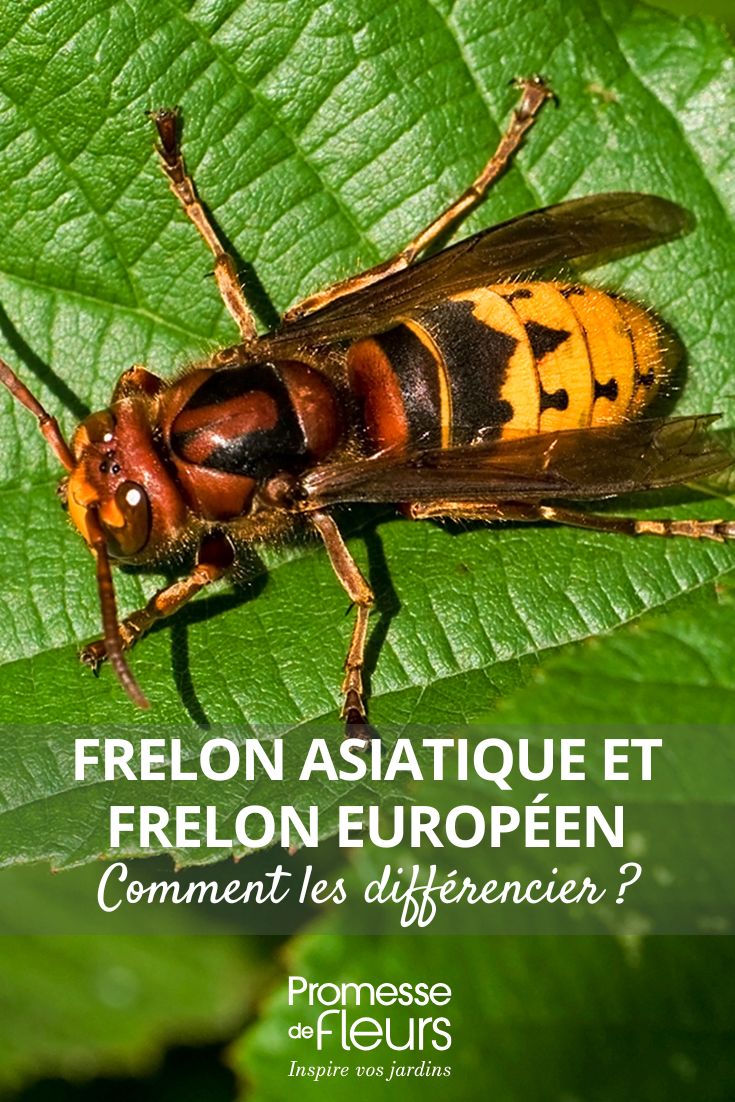































Comments